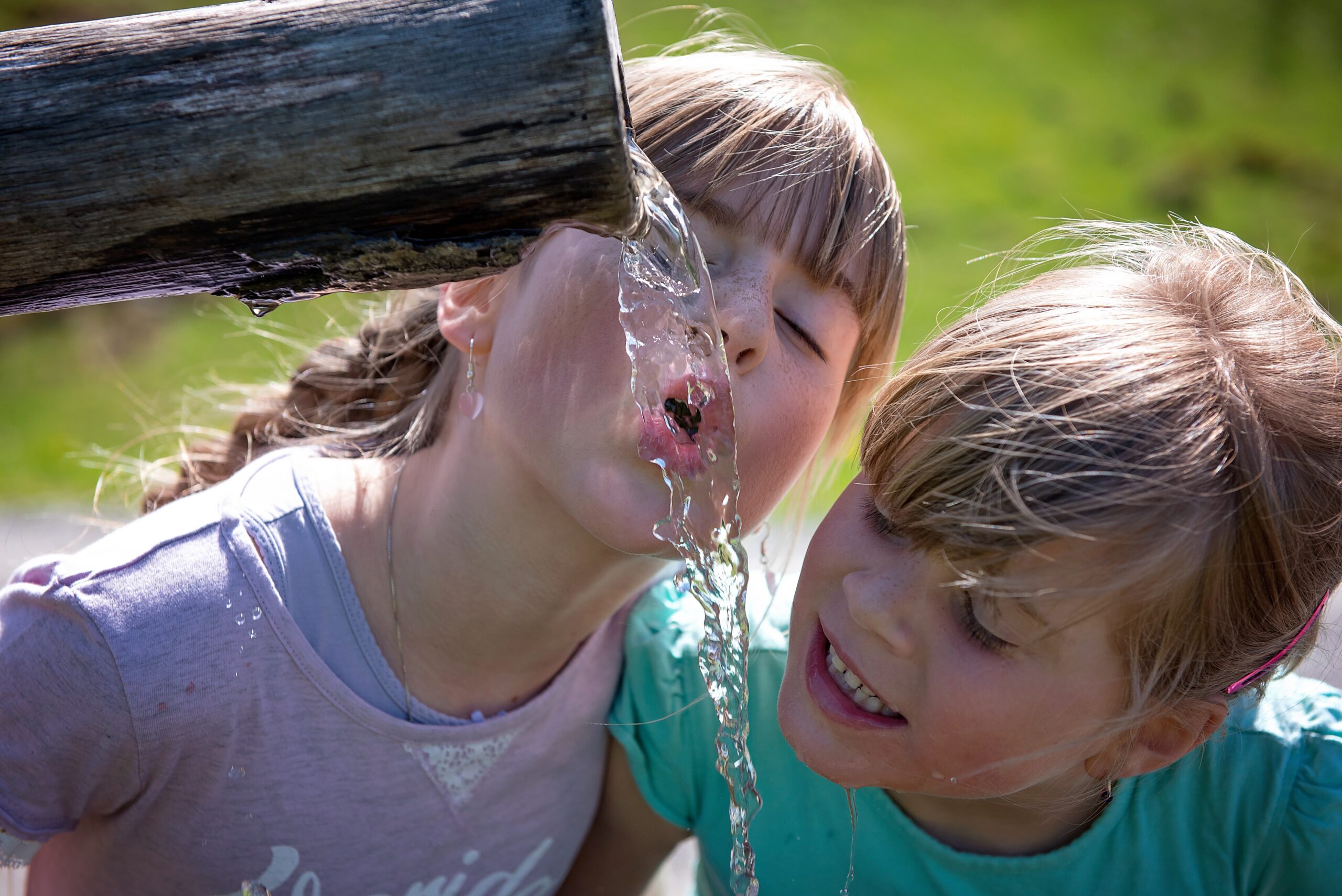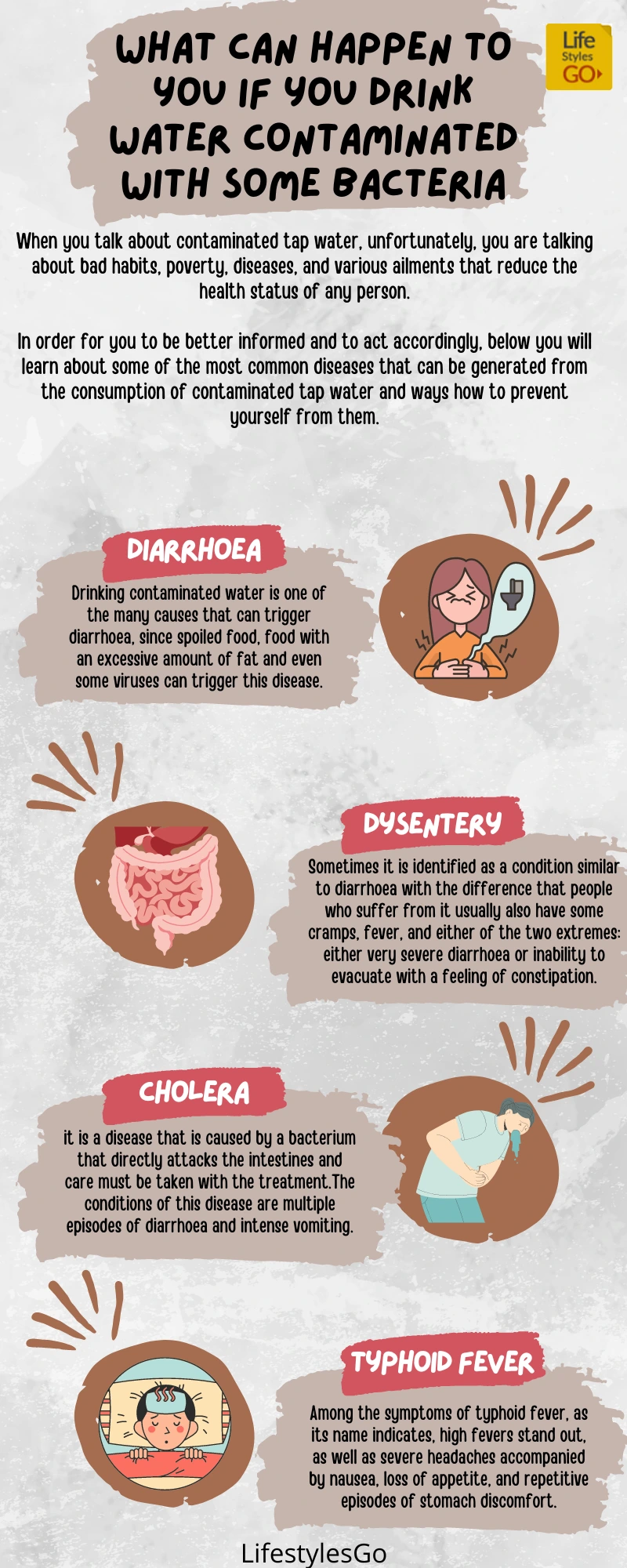The Hidden Dangers of Drinking Poorly Preserved Tap Water

It seems totally harmless when you put tap water in your bottle, store it in the fridge (or on top of the kitchen bench, unrefrigerated), and you have the feeling that it will never go bad. You go on vacation and you don’t even think about emptying the water jugs. You leave a glass on the nightstand or office desk and drink it the next day. But be careful, because although it is simply water, it is not eternal.
Tap water is not sterile, of course. Its conservation depends on several conditions. As per the indicative data, you should not keep it out of the fridge for more than one day in summer, and approximately one week in winter.
Table of Contents
Tap water and chlorine
Tap water contains chlorine to make it drinkable, a disinfectant that prevents microbiological growth. But that chlorine evaporates and, when it is lost, there is again a risk of contamination with microorganisms.
One of the factors on which the conservation of tap water depends is the quality of the water in each area, and the quality of the water treatment plant in each area.
The refrigerator causes the loss of chlorine (disinfectant) from the water to be slow and the reproduction of microorganisms to slow down as well, which is why tap water always lasts longer in the refrigerator.
In case, if it goes from the tap directly to the fridge, you can keep it for up to 10 or 15 days without problems. The same thing happens with mineral water, once opened, it has the same conservation period as that of the public network.
The temperature factor means that in summer there are many more chances of water contamination, although it is not usual. The sources from which the water is collected are at a lower level and the microbes are more concentrated.
Of course, when the water comes out of the treatment plant it doesn’t have to carry any risk, but the pipes can become contaminated, and in summer it is easier for this to happen, although it is not frequent.
Effects of plastic bottles
The plastic bottles which you buy to drink water at the supermarket are not designed for reuse because the chemicals in the plastic can pass into the food. That is why it is better that you store tap water in hard plastic or glass bottles or jugs. You can opt for glass because it is easier to wash.
Washing jugs, bottles and tap aerators (where limescale, impurities, and microbes accumulate) at the water outlet are also key. The containers, according to food safety specialists, should be thoroughly washed every week, with hot water or soap.
Incorporated filters of jar type containers
The most dangerous are the filters that are incorporated into jar-type containers. They are designed for room temperature and last for a month. In summer, the chances of creating a biofilm that forms a film for bacteria are high.
That is why it is always advisable to follow the recommendations of the manufacturers. The same thing happens with the osmosis filters installed in the taps. If you go over the time of use, there will be more possibilities of contamination in the water than when these filters are not used, because bacteria accumulate.
Another piece of advice for conserving water in the fridge is to cover it, to prevent the evaporation of chlorine and the entry of odors. Since as a neutral liquid, water absorbs them. Although sometimes you are assailed by the laziness of going for a glass, do not drink from the bottle, in any case.
What can happen to you if you drink water contaminated with some bacteria

You could suffer from gastroenteritis or an intestinal problem. Although it is true that water is not the most dangerous because microbes do not grow easily in it as it does not have nutrients like food. Food is likely to have much more contamination.
Contaminated water and its consequences
When you talk about contaminated tap water, unfortunately, you are talking about bad habits, poverty, diseases, and various ailments that reduce the health status of any person.
In order for you to be better informed and to act accordingly, below you will learn about some of the most common diseases that can be generated from the consumption of contaminated tap water and ways how to prevent yourself from them.
Diarrhoea
Drinking contaminated water is one of the many causes that can trigger diarrhoea, since spoiled food, food with an excessive amount of fat and even some viruses can trigger this disease. When this disease comes in contact with contaminated water, many electrolytes begin to be lost, and with this comes dehydration.
Dysentery
Sometimes it is identified as a condition similar to diarrhoea with the difference that people who suffer from it usually also have some cramps, fever, and either of the two extremes: either very severe diarrhoea or inability to evacuate with a feeling of constipation. It is usually caused by bacteria that appear in contaminated food or water.
It is suggested that this disease can be treated by a doctor with a specific treatment and it usually takes a few weeks for the body to recover 100%. If you want to prevent it, you have to avoid sources of dubious origin both in the case of food and water consumed.
Cholera
This condition is another one that can appear due to the consumption of contaminated water. It usually occurs much more in places with hot climates and it is a disease that is caused by a bacterium that directly attacks the intestines and care must be taken with the treatment.
The conditions of this disease are multiple episodes of diarrhoea and intense vomiting. It is said that this disease is a deadly enemy, you must be very careful and if you come in contact with it, in addition to a specific medical treatment, you should take plenty of fluids.
Typhoid fever
Among the symptoms of typhoid fever, as its name indicates, high fevers stand out, as well as severe headaches accompanied by nausea, loss of appetite, and repetitive episodes of stomach discomfort.
For this disease, there is no other source of proliferation other than the consumption of contaminated tap water and it must be treated by a health specialist so that the infection can be combated through the consumption of an antibiotic.
It is also essential that the source of this contaminated tap water be detected in order to prevent the disease from advancing and the virus from becoming resistant.
Take your precautions and avoid these diseases
Consume water from reliable sources, one option is installing filters and purifiers, which are products that have the highest standards for filtering the tap water. There are many ro service centers that offer doorstep services for repair and installation.
Due to its manufacturing characteristics, it allows you to be confident that the water you are going to consume is up to 99.9% purified.
Another advantage of purifiers is that their installation is easy, fast, and of course, that everything you invest in a device like this will pay off in the form of drinkable water in excellent condition, it will be one of your best acquisitions.
The Hidden Dangers of Drinking Poorly Preserved Tap Water Infographic:

Photo by form PxHere



